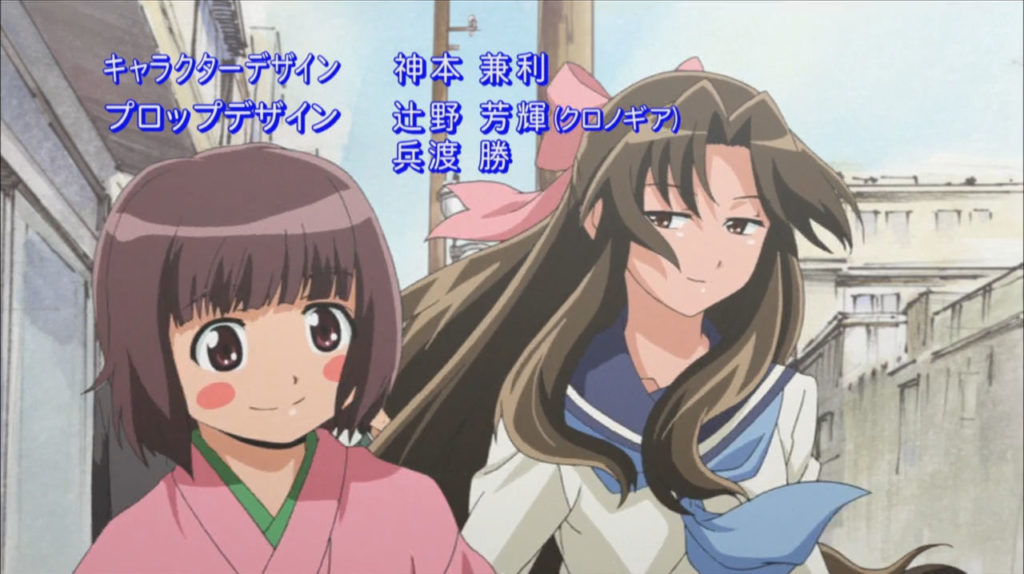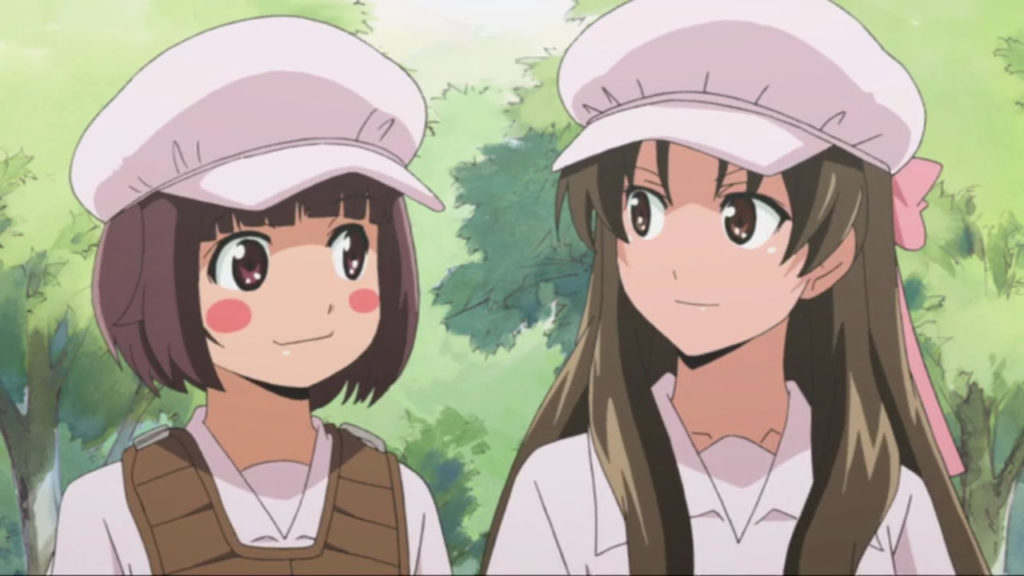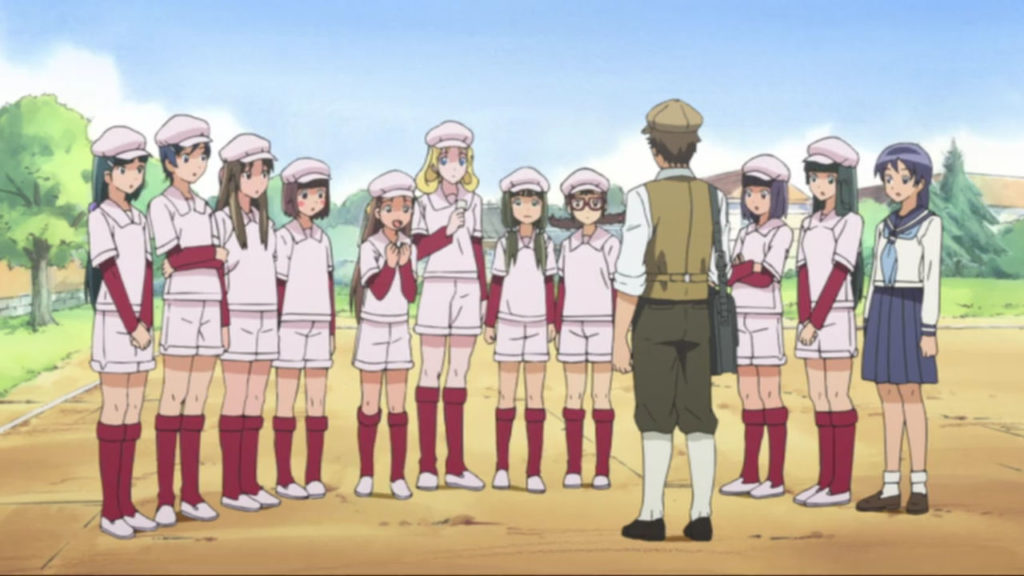Mostly harmless but with an otaku bonus
by Bob Johnson
I first heard about Taisho Baseball Girls as I was working on my Sayonara, Zetsubo-Sensei review, and for whatever reason, it’s a show that continued to stick in the back of my mind. Finally, a wave of ‘not much better to do’ collided with an upcoming edition, and I figured this would be a pop fly. It was going to be awesome. I was going to crush someone’s soul with a +2 frying pan of rejection. And if someone dared to complain about me beating up a defenceless pile of moéblobs, I’d just say “We publish most Aprils! It’s Baseball Season! It was going to happen eventually!”
So imagine my shock to discover that I actually enjoyed watching this show.

What?!
What is up with that Akiko leer? What is up with everything down to the baseball methods and stats being spot on? As it turns out, despite the name, despite the PG rating, Taisho Baseball Girls is not a glittery-saccharine, ‘let’s do our hair’ shojo. It’s a grit-and-determination, ‘let’s not tell mom and dad’ seinen.
Sure, there is yuri subtext just waiting to burst all over a fanfic writer’s keyboard. But if this was *just* about fanservice, why bother going to all the trouble of a historical piece? In 2009, the heyday of ‘X but with cute girls’ shows, you could just roll up a batch of waifus, coat them in pearl sugar, and bake them in the oven into some kind of The Sandlot ripoff (or nothing in particular) and just cash in. If that was the only goal, why even bother setting it in the 1920s?
Because this show needs ~Drama~! All-too-real drama about how “girls can’t play baseball.” Maybe you can still hear that false and mean-spirited taunt going around in more recent years, but a century ago, it was just about how Japanese society really would have reacted.
Japan’s Taisho era (1912-1926) is often remembered fondly as a time when Westernization was ongoing but hadn’t reached its endpoint, and national politics seriously flirted with actual democracy. Individuals in Japan were perhaps freer to choose their paths in the Taisho era than in the years immediately before or after, so it’s a great setting for historical fiction. (see also: Gosick)
Yet through the eyes of these aspiring young women, we can clearly see that within these rose-coloured lenses lays a paradox: though it was an age that was better for *some* people in *some* ways, it was not better for *all* – and the events of TBG clearly demonstrate how things were not always rosy. This was a time when a woman *picking her own husband* was a science fiction concept from the distant future year of 1947.

So, perhaps counterintuitively, if you’re going to have a show about cute girls doing cute things in this era, they’re probably all going to be rebels. That leads me to the heroine of this story, Akiko. Though technically second banana, Akiko is the driving force of the show from the start. She’s from a wealthy family, but was married off and lives essentially in a gilded cage. But she does still have some friends at school, and a defiant dream to stand up for herself and the role of women outside the home. But she’s rather isolated, so she turns to her BFF to help get a band together.
Koume, though nominally the protagonist, is not all that interesting. She’s a waitress at her parents’ restaurant, serving period-accurate fusion cuisine. The only things that she truly wants are a new set of clothes, and to not to disappoint her friends. Mainly we see her reacting with alarm or stubbornness to the events around her. Only rarely does she drive things forward personally.
The remaining characters add more fun and flavour, though apart from Noe’s quest for management-quality information on the Asaka baseball team, most of the antics aren’t necessarily plot-essential.

If you think that anything from the 2000s that moés up a clutch of anime girls is asinine, or that most forms of the training montage are mind-numbingly boring, then you’ve probably already zoned out. This is not a show for everyone, indeed, this is a show for some very specific kinds of weebs.
You’ll probably appreciate TBG if you like Japanese history, or if you’ve been known to join Hana Oshiroi in the art of keyboard-bending, and also if you enjoy the Great American Pastime. If you are a Sub purist, your fancy might also be tickled by the fact there’s no English dub at all!
Are you looking for a samurai tale with challenge letters and duels? A bittersweet tale about about how love is shortchanged by the institution of arranged marriage? A gag comedy slice of life? Something yurilicious? It’s all in the tin here – Taisho Baseball Girls provides a bit more than you’d guess at first glance.
Maybe look it up:
Taisho Baseball Girls (2009) 12 episode anime
Based on the light novels by Atsushi Kagurazaka and Sadaji Koike
Produced by J.C. Staff, Licenced by Sentai

Pingback: Binary Stars and other BS | MaximumWeeaboo